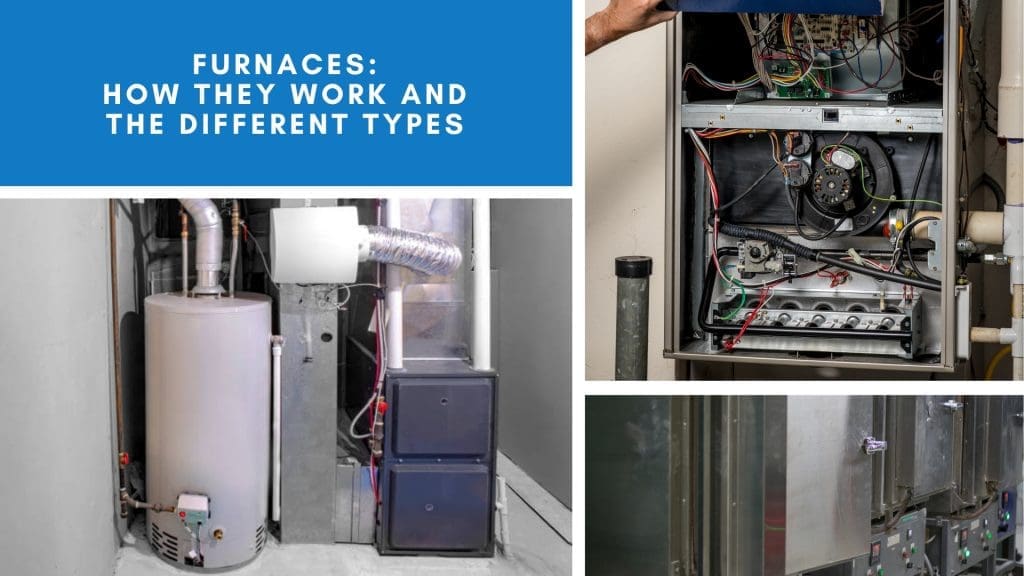Hollywood, a city known for its glitz and glamour, is now grappling with an unprecedented challenge: record-breaking heat. As temperatures soar to historic highs, the need for effective cooling solutions has never been more urgent. This article explores the critical role of air conditioning in protecting public health amid Hollywood’s escalating heatwaves and the broader implications of these extreme weather conditions.
Hollywood’s Record Heat: An Unprecedented Challenge
Hollywood has always been synonymous with bright lights and sunny skies, but recent climate patterns are pushing the city’s temperatures to dangerous levels. Record heatwaves are becoming the new norm, putting immense strain on the city’s infrastructure and residents. This unprecedented challenge is not just a matter of discomfort; it poses severe risks to public health and safety.
In the past, Hollywood’s climate was relatively temperate, making the recent surge in temperatures particularly alarming. Meteorological data points to a dramatic increase in the frequency and severity of heatwaves over the past decade. As the city swelters under record heat, the need for comprehensive cooling strategies becomes increasingly apparent.
Experts attribute these rising temperatures to a combination of global climate change and urban heat island effects. Hollywood’s dense population and extensive concrete surfaces trap heat, exacerbating the already severe conditions. Addressing this challenge requires immediate action and innovative solutions to mitigate the heat’s impact on the city’s residents.

Air Conditioning as a Lifesaver Amid Hollywood Heatwaves
Air conditioning has emerged as a critical tool in the fight against Hollywood’s sweltering heatwaves. As temperatures climb to perilous highs, air conditioning provides much-needed relief, transforming indoor spaces into safe havens from the oppressive heat. For many residents, having access to air-conditioned environments is not just a matter of comfort but a necessity for survival.
The importance of air conditioning cannot be overstated, especially for vulnerable populations such as the elderly, children, and those with preexisting health conditions. These groups are particularly susceptible to heat-related illnesses, making reliable cooling solutions essential for their well-being. In many cases, air conditioning can mean the difference between life and death during extreme heat events.
Public health officials are increasingly recognizing the lifesaving potential of air conditioning. Efforts are underway to ensure that all residents, regardless of socioeconomic status, have access to cooling systems during heatwaves. This includes initiatives to provide low-cost or subsidized air conditioning units to those in need, highlighting the critical role of climate control in safeguarding public health.
Health Risks Surge with Hollywood’s Soaring Temperatures
The surge in Hollywood’s temperatures is accompanied by a corresponding rise in health risks. Heatwaves are notorious for triggering a host of medical emergencies, including heat exhaustion, heatstroke, and exacerbation of chronic conditions like cardiovascular and respiratory diseases. The city’s healthcare system is under considerable strain as it copes with the influx of heat-related cases.
Heat exhaustion and heatstroke are among the most immediate dangers posed by extreme heat. Symptoms range from mild dizziness and fatigue to severe dehydration and loss of consciousness. Without prompt intervention, heatstroke can quickly become fatal, underscoring the urgent need for effective cooling measures.
Chronic health conditions also deteriorate during heatwaves, as high temperatures place additional stress on the body. For individuals with heart disease, respiratory issues, or diabetes, the heat can be particularly taxing, leading to increased hospital admissions and, in severe cases, fatalities. This makes the availability of air conditioning an essential component of public health strategy in Hollywood.
Examining Hollywood’s Heat: Why Air Conditioning Matters
Understanding why air conditioning is so vital in Hollywood’s current climate requires an examination of the unique challenges posed by the city’s heat. Unlike other regions, Hollywood’s heatwaves are amplified by specific local conditions, including urbanization and geographical factors. These elements combine to create an environment where traditional cooling methods are insufficient.
Urban heat islands, characterized by higher temperatures in metropolitan areas compared to surrounding rural regions, play a significant role in Hollywood’s heat. The city’s pavement, buildings, and infrastructure absorb and retain heat, leading to significantly warmer conditions. This makes air conditioning an indispensable tool for maintaining safe indoor temperatures.
Geographical factors also contribute to Hollywood’s high temperatures. The city’s location in Southern California exposes it to intense sun and minimal rainfall, further exacerbating the heat. Without adequate cooling systems, residents are left vulnerable to the relentless sun and soaring temperatures, highlighting the necessity for widespread access to air conditioning.
The Science Behind Hollywood’s Record-Breaking Temperatures
To fully grasp the severity of Hollywood’s heat, it’s essential to delve into the science behind these record-breaking temperatures. Climate scientists point to a combination of global warming and local environmental changes as key drivers of the current heat crisis. Understanding these factors can help formulate effective strategies to combat the heat.
Global warming, fueled by increased greenhouse gas emissions, is a primary contributor to rising temperatures worldwide. Hollywood, like many other urban centers, is experiencing the direct effects of this phenomenon. The steady increase in average temperatures is leading to more frequent and intense heatwaves, posing significant challenges for the city’s residents.
Local environmental changes, such as deforestation and urbanization, exacerbate the heat in Hollywood. Trees and green spaces, which naturally cool the environment through shade and evapotranspiration, are being replaced by buildings and roads that absorb and retain heat. This transformation of the landscape amplifies the heat island effect, making air conditioning a critical necessity for mitigating the impact of these changes.
Air Conditioning: A Critical Tool in Hollywood’s Heat Battle
In the battle against Hollywood’s escalating heat, air conditioning stands out as a critical tool. Its ability to provide immediate and effective relief from extreme temperatures makes it indispensable in safeguarding public health. As heatwaves become more frequent and severe, the reliance on air conditioning is only set to increase.
One of the key advantages of air conditioning is its ability to create controlled indoor environments. By maintaining a stable and comfortable temperature, air conditioning systems help prevent heat-related health issues and improve overall quality of life. This is particularly important during prolonged heatwaves, where sustained exposure to high temperatures can have detrimental effects.
Furthermore, advancements in air conditioning technology are making these systems more efficient and accessible. Innovations such as energy-efficient units and smart cooling systems are reducing the environmental impact of air conditioning, addressing concerns about energy consumption and greenhouse gas emissions. These developments are crucial for ensuring that air conditioning remains a viable solution in Hollywood’s ongoing heat battle.
Public Health Concerns Rise with Hollywood’s Heat Records
As Hollywood continues to shatter heat records, public health concerns are rising in tandem. The correlation between extreme heat and health emergencies is well-documented, and the city’s healthcare infrastructure is feeling the strain. The need for proactive measures to protect residents from the adverse effects of heat is more pressing than ever.
Heatwaves pose a formidable threat to public health, with the potential to overwhelm medical facilities and resources. Emergency rooms see a spike in admissions for heat-related illnesses, placing additional pressure on healthcare providers. This surge in demand highlights the importance of preventive measures, including widespread access to air conditioning.
Public health campaigns are crucial in raising awareness about the dangers of extreme heat and promoting behaviors that can mitigate risks. These initiatives often emphasize the importance of staying hydrated, avoiding strenuous activities during peak heat, and seeking refuge in air-conditioned spaces. By prioritizing these measures, Hollywood can better protect its residents from the health risks associated with record heat.
Evaluating Air Conditioning’s Role in Hot Hollywood Summers
Air conditioning plays an indispensable role in managing Hollywood’s hot summers. Its effectiveness in lowering indoor temperatures makes it a cornerstone of any strategy aimed at combating heat-related health risks. Evaluating its impact involves considering both the immediate benefits and the long-term sustainability of air conditioning solutions.
The immediate benefits of air conditioning are evident in its ability to provide rapid relief from extreme heat. During heatwaves, air-conditioned environments offer a safe haven for individuals at risk of heat-related illnesses. This is particularly crucial for vulnerable populations, who may not have the resilience to withstand prolonged exposure to high temperatures.
However, the long-term sustainability of air conditioning must also be addressed. As reliance on these systems grows, so does the demand for electricity, raising concerns about energy consumption and environmental impact. Efforts to improve the energy efficiency of air conditioning units and integrate renewable energy sources are essential for ensuring that air conditioning remains a viable solution in the face of Hollywood’s escalating heat.
How Hollywood’s Heat Waves Impact Vulnerable Populations
Vulnerable populations in Hollywood are disproportionately affected by the city’s intense heatwaves. These groups, which include the elderly, children, low-income households, and individuals with chronic health conditions, face heightened risks during periods of extreme heat. Ensuring their protection requires targeted interventions and accessible cooling solutions.

The elderly and those with preexisting health conditions are particularly susceptible to heat-related illnesses. Their bodies are less efficient at regulating temperature, making them more vulnerable to heat exhaustion and heatstroke. For these individuals, access to air conditioning is not a luxury but a critical necessity for maintaining health and preventing medical emergencies.
Low-income households often struggle to afford the high costs associated with air conditioning, leaving them at greater risk during heatwaves. Programs that provide financial assistance for purchasing and operating air conditioning units can significantly improve the resilience of these communities. Ensuring equitable access to cooling solutions is essential for protecting all residents from the dangers of Hollywood’s record heat.
Hollywood’s Heat Crisis: Ensuring Access to Air Conditioning
Ensuring access to air conditioning in Hollywood’s heat crisis is a matter of public health and social equity. As temperatures continue to rise, the disparity in access to cooling solutions becomes more pronounced, highlighting the need for comprehensive policies that address this critical issue.
Government and community initiatives play a vital role in bridging the gap between those who have access to air conditioning and those who do not. Subsidies, grants, and other financial assistance programs can help low-income families afford the costs associated with air conditioning. Public cooling centers, equipped with air conditioning, can also provide temporary relief for residents during extreme heat events.
Long-term strategies must focus on sustainable and equitable solutions. Investing in energy-efficient air conditioning technologies, expanding the use of renewable energy sources, and implementing urban planning practices that
Speaking of extreme heat and the challenges it brings, you might be interested in learning more about the Urban Heat Island effect, which explains how city environments contribute to higher temperatures. To understand the importance of cooling technologies, check out the article on Air Conditioning. Additionally, since climate patterns play a big role in increasing heatwaves, you may find the entry on Heat Waves helpful to grasp their impact on public health and urban centers like Hollywood.


